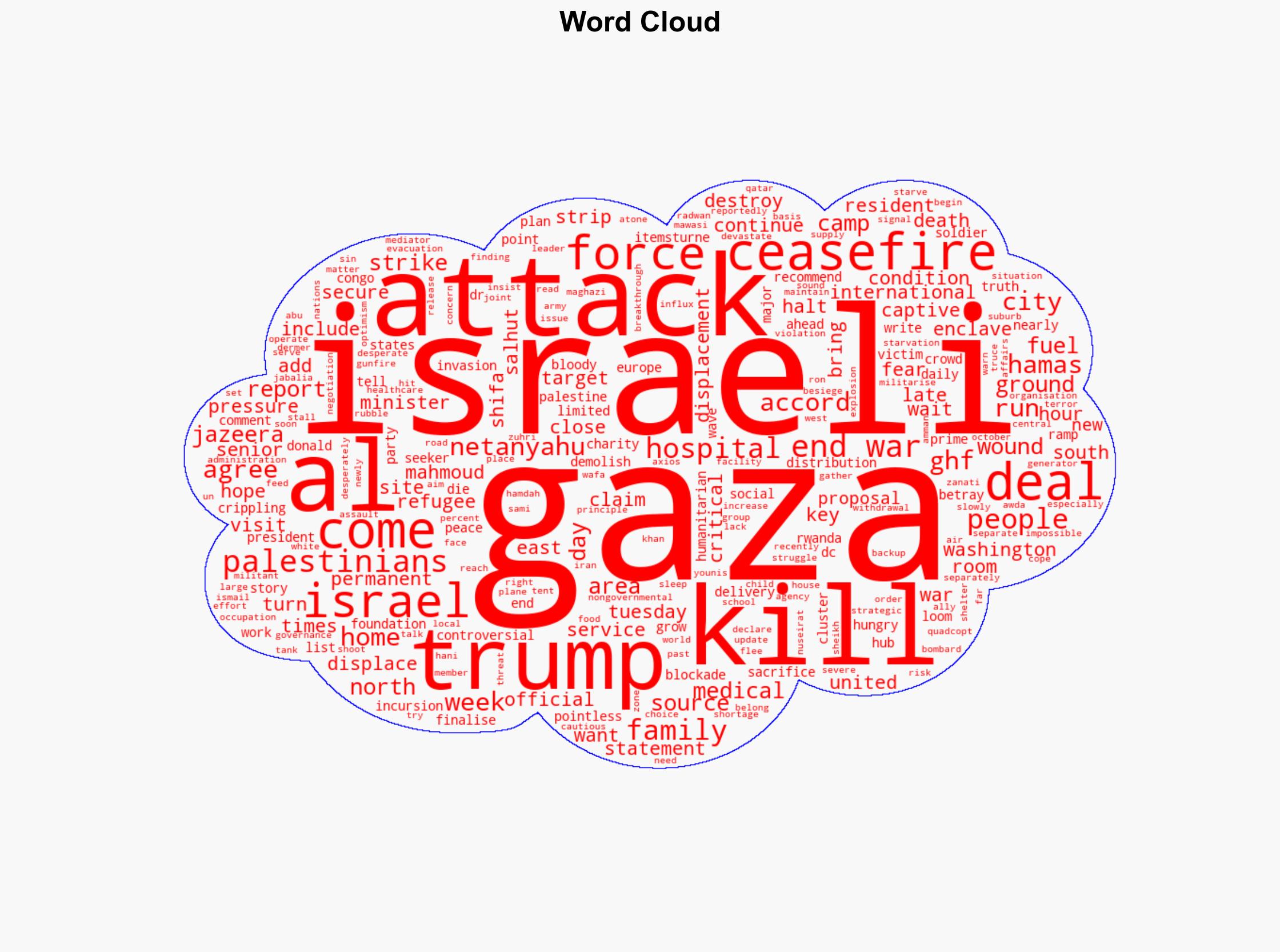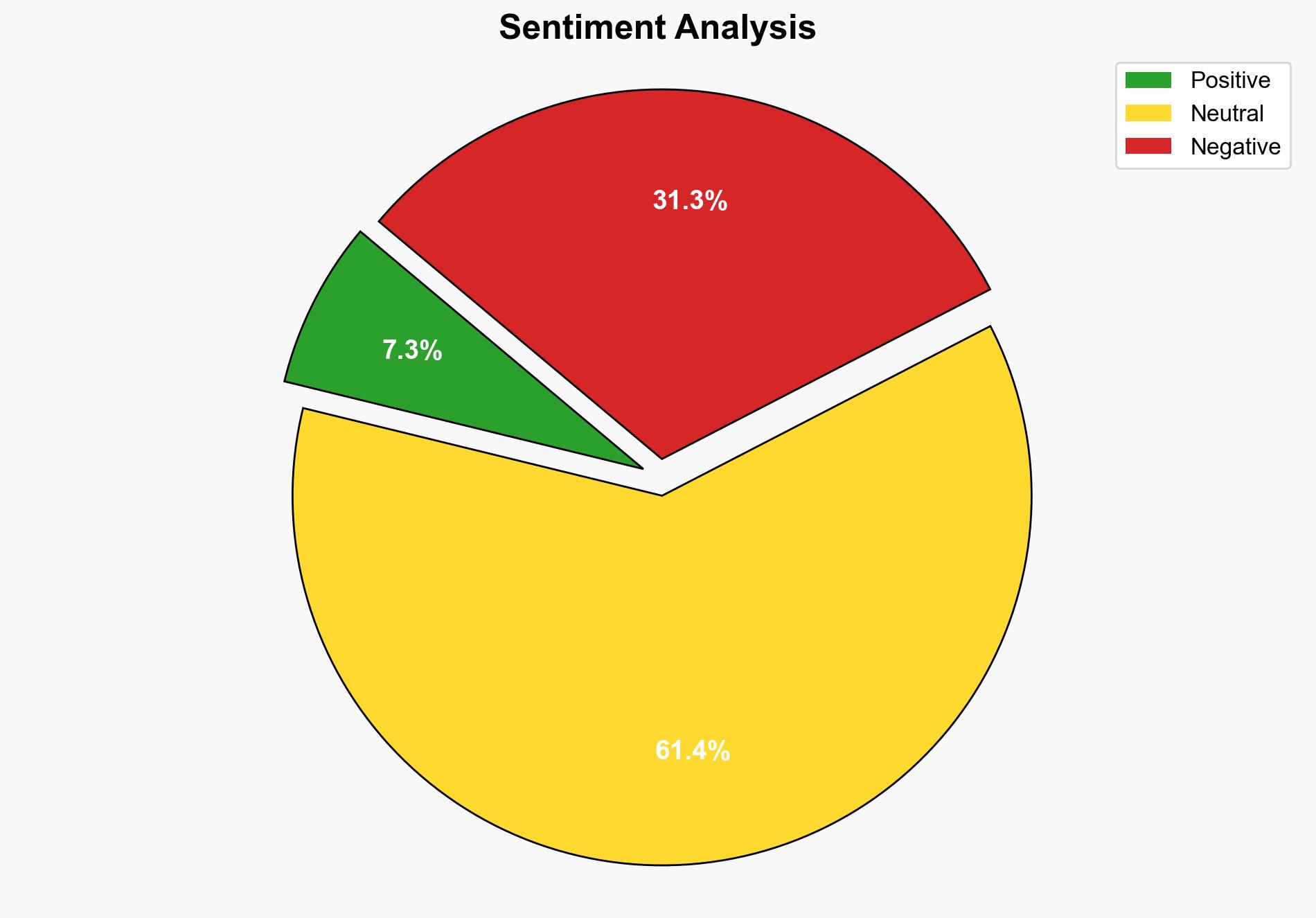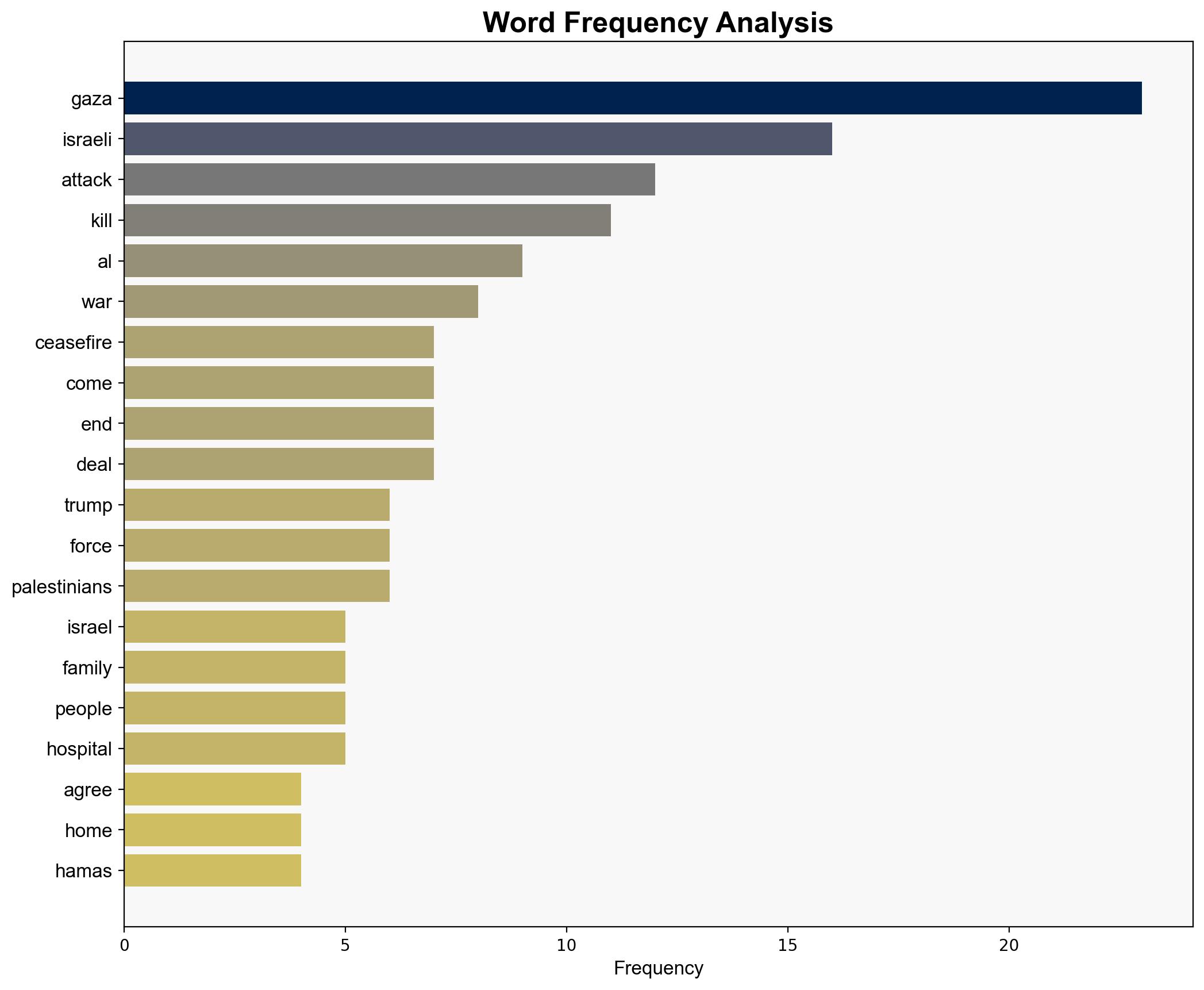Israel kills 102 in Gaza as Trump says he will be firm with Netanyahu – Al Jazeera English
Published on: 2025-07-01
Intelligence Report: Israel kills 102 in Gaza as Trump says he will be firm with Netanyahu – Al Jazeera English
1. BLUF (Bottom Line Up Front)
The current escalation in Gaza has resulted in significant casualties, with 102 Palestinians reported killed. The situation is exacerbated by ongoing Israeli military operations and a crippling blockade. U.S. President Donald Trump has indicated a firm stance with Israeli Prime Minister Netanyahu, suggesting potential diplomatic pressure to reach a ceasefire. Immediate strategic focus should be on facilitating humanitarian aid and preventing further escalation.
2. Detailed Analysis
The following structured analytic techniques have been applied to ensure methodological consistency:
Causal Layered Analysis (CLA)
– **Surface Events**: Israeli military operations in Gaza have intensified, leading to high civilian casualties and destruction of infrastructure.
– **Systemic Structures**: The blockade and military actions are part of a broader geopolitical struggle involving regional power dynamics and historical grievances.
– **Worldviews**: The conflict is framed by differing narratives of security, resistance, and territorial rights.
– **Myths**: Long-standing beliefs about existential threats and historical entitlements continue to fuel the conflict.
Cross-Impact Simulation
– Potential ripple effects include increased regional instability, potential involvement of neighboring states, and disruptions to international diplomatic efforts.
Scenario Generation
– **Best Case**: A ceasefire is brokered, leading to a reduction in hostilities and opening channels for humanitarian aid.
– **Worst Case**: Full-scale ground invasion by Israeli forces, resulting in significant civilian casualties and regional destabilization.
– **Most Likely**: Continued skirmishes with intermittent ceasefire attempts, maintaining a status quo of tension and humanitarian crisis.
3. Implications and Strategic Risks
The ongoing conflict poses significant risks, including:
– **Political**: Strained international relations, particularly between the U.S. and Middle Eastern allies.
– **Military**: Potential for broader regional conflict involving neighboring countries.
– **Economic**: Disruption of regional trade and increased humanitarian aid costs.
– **Cyber**: Heightened risk of cyber-attacks targeting critical infrastructure in response to military actions.
4. Recommendations and Outlook
- Engage in diplomatic efforts to broker a ceasefire and facilitate humanitarian aid delivery.
- Monitor regional alliances and prepare for potential shifts in geopolitical alignments.
- Enhance cybersecurity measures to protect critical infrastructure from potential retaliatory attacks.
- Scenario-based projections:
- **Best Case**: Diplomatic engagement leads to a sustained ceasefire and humanitarian relief.
- **Worst Case**: Escalation results in broader regional conflict and humanitarian disaster.
- **Most Likely**: Continued tension with sporadic ceasefires and ongoing humanitarian challenges.
5. Key Individuals and Entities
– Donald Trump
– Benjamin Netanyahu
– Hamas
6. Thematic Tags
national security threats, cybersecurity, counter-terrorism, regional focus




